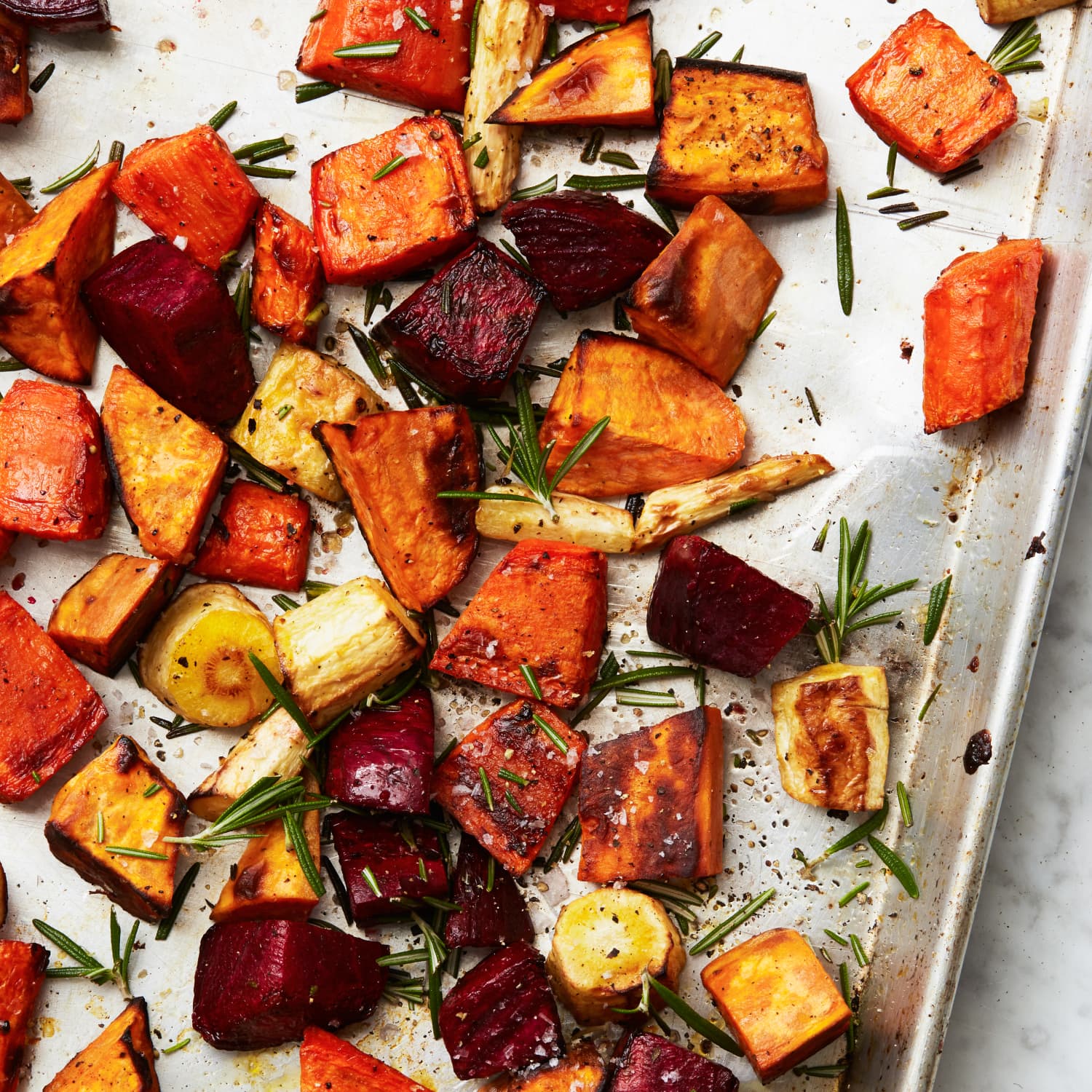
When you think about healthy eating, salads and green vegetables usually come to mind. But how about adding a little more variety to your plan?
Roots like carrots, sweet potatoes, and turnips, are a rich source of nutritious complex carbohydrates. Instead of upsetting blood sugar levels like refined sweet foods do, they help regulate them.
Why Eat More Root Veggies?
Long roots – carrots, parsnips, burdock, and daikon radish – are excellent blood purifiers and can help improve circulation in the body. Round roots – turnips, radishes, beets, and rutabagas – nourish the stomach, spleen, pancreas, and reproductive organs.
Which root vegetables do you eat most?
If you’re like most of the world, it’s carrots and potatoes. Here are a few others to explore:
- Beets contain an abundance of antioxidants and are highly detoxifying.
- Burdock is considered a powerful blood purifier. This long, thin veggie is a staple in Asian and health food stores.
- Celeriac, also known as celery root, is rich in fiber and with a respectable amount of antioxidants.
- Jicama is crunchy and refreshing and contains a generous amount of vitamin C. It’s a favorite in its native Mexico and South America.
- Onions are rich in antioxidants and other phytonutrients, making them prized for their ability to strengthen the immune system.
- Parsnips, which look like giant white carrots, boast a sweet, earthy taste. They’ve also got plenty of fiber, vitamin C, folic acid, niacin, thiamine, magnesium, and potassium.
- Radish is an excellent source of vitamin C. It’s also rich in calcium, molybdenum, and folic acid.
- Sweet Potatoes contain unsurpassed levels of beta-carotene and are also rich in vitamin C, phytonutrients, and fiber.
Excited to add more roots to your diet? Here’s a fun, easy recipe:
Roasted Root Vegetables
Prep time: 10 minutes
Cooking time: 25-35 minutes
Ingredients
1 sweet potato
2 parsnips
2 carrots
2 turnips or 1 large rutabaga
1 daikon radish (or substitute/add in other favorites, like squash)
extra virgin olive oil
salt and pepper
herbs: rosemary, thyme or sage (fresh if possible)
Instructions
Preheat oven to 375 degrees.
Wash and dice all vegetables into bite-sized cubes.
Place in a large baking dish with sides.
Drizzle with olive oil; mix well to coat each vegetable lightly with oil.
Sprinkle with salt, pepper and herbs.
Bake uncovered for 25-35 minutes until vegetables are tender and golden brown, checking every 10 minutes to stir and make sure veggies are not sticking.
Tip: Any combination of vegetables will work. Roasting only one kind of vegetable also makes a nice side dish.
GET EVEN HEALTHIER!
Are you curious about how to choose root vegetables and other nutritious foods? Would you like help being as healthy as you can? Let’s talk! Schedule an initial complimentary consultation with me today—or pass this offer on to someone you care about!
Versión En Español
¡Vaya más allá de la ensalada y pruebe estas verduras!
Cuando piensas en una alimentación saludable, generalmente le vienen a la mente ensaladas y vegetales verdes. Pero, ¿qué tal si agrega un poco más de variedad a su plan de comida?
Las raíces como las zanahorias, las batatas y los nabos son una rica fuente de carbohidratos complejos nutritivos. En lugar de alterar los niveles de azúcar en la sangre como lo hacen los alimentos dulces refinados, ayudan a regularlos.
¿Por qué comer más verduras de raíz?
Las raíces largas (zanahorias, pastinacas, bardana y rábano daikon) son excelentes purificadores de la sangre y pueden ayudar a mejorar la circulación en el cuerpo. Las raíces redondas (nabos, rábanos, remolachas y colinabos) nutren el estómago, el bazo, el páncreas y los órganos reproductivos.
¿Qué tubérculos come más?
Si eres como la mayoría del mundo, son zanahorias y papas. Aquí hay algunos otros para explorar:
- Las remolachas contienen abundantes antioxidantes y son altamente desintoxicantes.
- La bardana se considera un poderoso purificador de sangre. Este vegetal largo y delgado es un alimento básico en las tiendas asiáticas y de alimentos saludables.
- El apio, también conocido como raíz de apio, es rico en fibra y con una cantidad respetable de antioxidantes.
- La jícama es crujiente y refrescante y contiene una generosa cantidad de vitamina C.
- Las cebollas son ricas en antioxidantes y otros fitonutrientes, lo que las hace muy apreciadas por su capacidad para fortalecer el sistema inmunológico.
- Las chirivías, que parecen zanahorias blancas gigantes, tienen un sabor dulce y terroso. También tienen mucha fibra, vitamina C, ácido fólico, niacina, tiamina, magnesio y potasio.
- El rábano es una excelente fuente de vitamina C. También es rico en calcio, molibdeno y ácido fólico.
- Las batatas contienen niveles insuperables de betacaroteno y también son ricas en vitamina C, fitonutrientes y fibra.
¿Te gustaria agregar más raíces a tu dieta? Aquí hay una receta divertida y fácil:
Verduras de raíz asadas
Tiempo de preparación: 10 minutos.
Tiempo de cocción: 25-35 minutos.
Verduras de raíz asadas
Ingredientes
1 batata
2 chirivías
2 zanahorias
2 nabos o 1 colinabo grande
1 rábano daikon (o sustituir / agregar en otros favoritos, como la calabaza)
aceite de oliva virgen extra
sal y pimienta
hierbas: romero, tomillo o salvia (frescas si es posible)
Instrucciones
Precaliente el horno a 375 grados. Lave y corte todos los vegetales en cubos pequeños.
Colocar en una fuente de horno grande. Rociar con aceite de oliva; mezcle bien para cubrir cada vegetal con aceite. Sazone con sal, pimienta y hierbas. Hornee sin cubrir durante 25-35 minutos hasta que las verduras estén tiernas y doradas, verifique cada 10 minutos para remover y asegurarse de que las verduras no se peguen.
Consejo: cualquier combinación de vegetales funcionará.
¡AÚN MÁS SALUDABLE!
¿Tienes curiosidad sobre cómo elegir los tubérculos y otros alimentos nutritivos? ¿Desea ayuda para estar lo más saludable posible? ¡Hablemos! Programe una consulta inicial gratuita conmigo hoy mismo, ¡o pase esta oferta a alguien que le interese!
